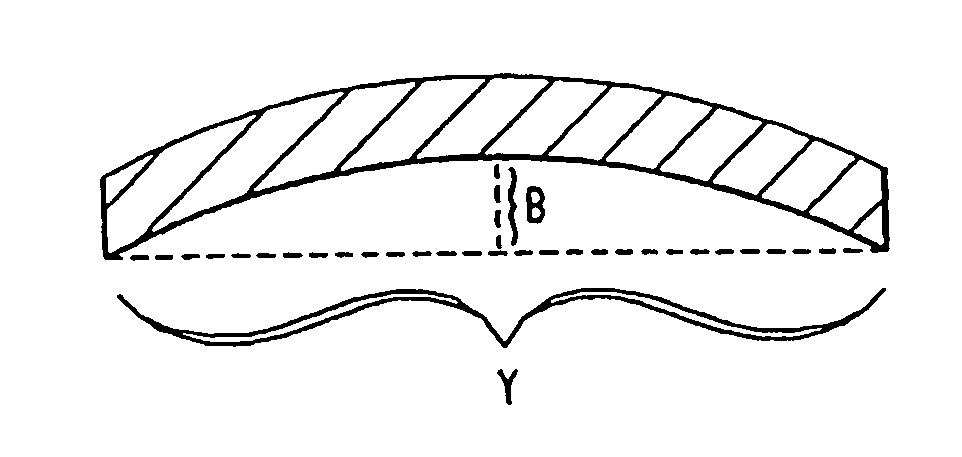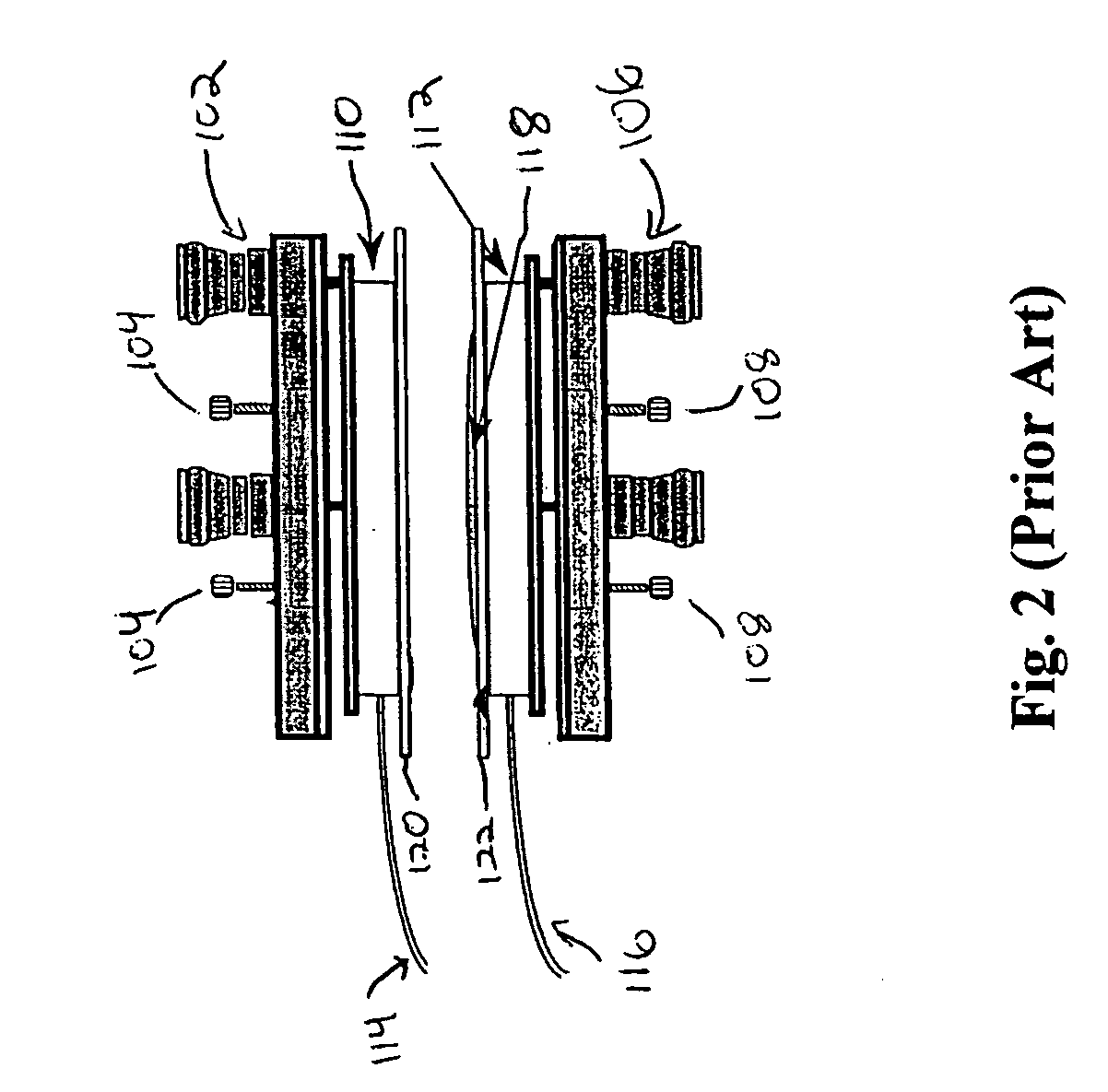Method and apparatus for forming optical articles
- Summary
- Abstract
- Description
- Claims
- Application Information
AI Technical Summary
Benefits of technology
Problems solved by technology
Method used
Image
Examples
example i
[0104] A multi-layer optical media package was fabricated in a first example by the following steps. An optical flat was utilized with an outer diameter measuring 150 mm, a thickness of 25.4 mm, surface flatness of 0.1 waves / cm, and with etched vacuum grooves at 127 mm and 25.4 mm diameters. The vacuum grooves are about 1 mm in width and about 0.5 mm in depth. The optical flats were placed in a mechanical mount that statically held the outer rim of the optical flats flush while holding the bottom flat level. The bottom flat is then fitted with a retainer that holds 3 spacer balls at 120° increments around the outer rim. The spacer balls are AFBMA Grade 25 standard made of single crystal sapphire with a diameter of 3.000 mm. The flats were then cleaned using the drag and drop technique with methanol.
[0105] A glass substrate with an outer diameter of 130 mm, an inner hole with a diameter of 15 mm, and 0.7 mm thick was then cleaned using the same technique described above and placed c...
example ii
[0107] A multi-layer optical media package was fabricated by the following steps. An optical flat was utilized with an outer diameter measuring 101.6 mm, with a thickness of 25.4 mm, surface flatness of 0.1 waves / cm, with etched grooves of an inner diameter of 6.4 cm. These grooves are 3.2 mm wide by about 1.6 mm deep. Square glass substrates of display glass measuring 75 mm by 75 mm were cleaned and placed on each of the optical flats according to the method of the first example. The outer edge of the substrates and the spacer balls are held with a mechanical mount (e.g., see FIG. 3) that is incorporated with the optical flats. Matrix resin was then pooled on the bottom substrate and the top substrate was then lowered slowly an angle till surface contact was made. The top flat was then hinged slowly until it made contact with each of the spacer balls. The apparatus was then left until the matrix resin at least partially hardened. The vacuum was then released and the media package w...
PUM
 Login to View More
Login to View More Abstract
Description
Claims
Application Information
 Login to View More
Login to View More - R&D
- Intellectual Property
- Life Sciences
- Materials
- Tech Scout
- Unparalleled Data Quality
- Higher Quality Content
- 60% Fewer Hallucinations
Browse by: Latest US Patents, China's latest patents, Technical Efficacy Thesaurus, Application Domain, Technology Topic, Popular Technical Reports.
© 2025 PatSnap. All rights reserved.Legal|Privacy policy|Modern Slavery Act Transparency Statement|Sitemap|About US| Contact US: help@patsnap.com



